The Eise Eisinga Planetarium is the oldest working planetarium in the world. The planetarium is situated in Franeker, a small historic town in the Netherlands. It was built between 1774 and 1781 by Eise Eisinga, a wool manufacturer and an amateur astronomer The planetarium is a moving mechanical scale model of the solar system as it was known at the time, the system is powered by one single pendulum clock. It provides a realistic image of the positions of the Sun, the Moon and the planets Mercury, Venus, Earth, Mars, Jupiter and Saturn (Neptune, Uranus and the dwarf planet Pluto were not discovered yet at the time Eisinga built his planetarium). The planets revolve around the Sun in real time, the distance between the planets is at scale. Eise Eisinga built the planetarium into the ceiling and south wall of his living/bedroom, it fills the entire ceiling of the room. He spent seven years building it. Just after Eise Eisinga completed his planetarium, a new planet was discovered, Uranus, but there was no room to accomodate it. Eisinga died in 1828, he left detailed instructions on how to maintain the planetarium. The work of Eise Eisinga has been included in the national Canon of the Netherlands. The Eise Eisinga Planetarium is a museum and offers also an interesting collection of astronomical instruments. The Eise Eisinga Planetarium in Franeker gained status as a UNESCO World Heritage in 2023. Work of Art: Eise Eisinga
www.werelderfgoedfotos.nl © Copyright World Heritage Photos classic car road trip
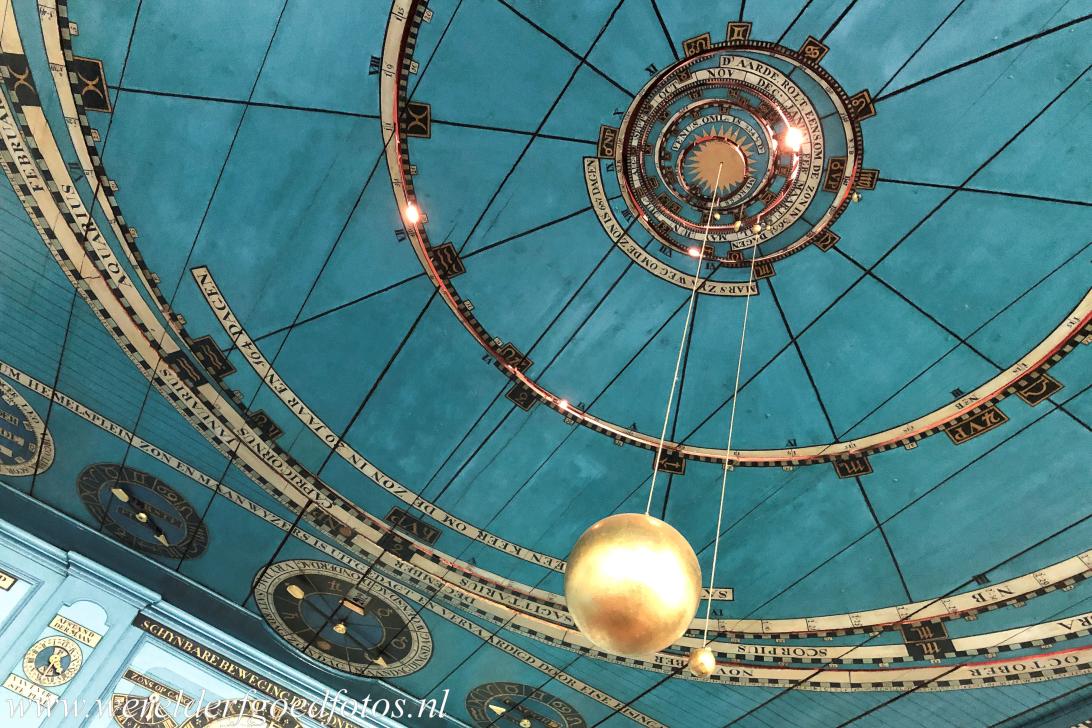
The Eise Eisinga Planetarium in Franeker is the oldest working planetarium in the world. It was built between 1774 and 1781 by Eise Eisinga, he built the planetarium into the ceiling and south wall of his living/bedroom, it fills the entire ceiling of the room. He spent seven years building it. The Sun is represented by a golden sphere hanging from the ceiling. The planetarium was built to scale: One millimeter on the ceiling represents one million kilometres.

The Eise Eisinga Planetarium in Franeker is the oldest working planetarium in the world. It was built between 1774 and 1781 by Eise Eisinga, he built the planetarium into the ceiling and south wall of his living/bedroom, it fills the entire ceiling of the room. He spent seven years building it. The Sun is represented by a golden sphere hanging from the ceiling. The planetarium was built to scale: One millimeter on the ceiling represents one million kilometres.
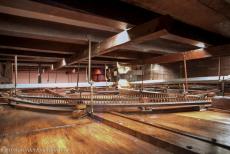
Eise Eisinga Planetarium in Franeker: The impressive system used to make the planets revolve around the Sun consists of oak wooden axles and gears, Eise Eisinga used nearly 6,000 hand-forged nails as cogs, the 'teeth' on the wheels, the cogs interlock to turn the gears. Eise Eisinga was a wool manufacturer and an amateur astronomer. Eisinga also wrote several manuscripts on astronomy and mathematics.
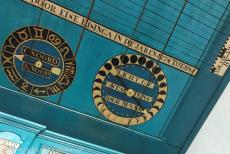
Eise Eisinga Planetarium in Franeker: On the ceiling, the brother of Eise Eisinga painted the text: This planetarium was built between 1774 and 1781 by Eise Eisinga. Eisinga was given a good education by his parents, apart from the usual lessons, the highly gifted Eise Eisinga got extra education in mathemathics and astronomyy at the University of Franeker. In 1774, he starts the realisation of a planetarium in his livingroom.
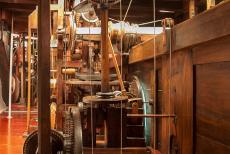
Eise Eisinga Planetarium in Franeker: The cogs are powered by one single pendulum clock. The pendulum clock is driven by eight weights. The eight weights are connected to the main axles of the cogwheels. The pendulum clock regulates correct the orbital speed of the moon and planets via an imposing wooden gear system. The pendulum swings at a rate of 80 times per minute. In the cupboard in the living room, the weights are hanging from the mechanism upstairs.
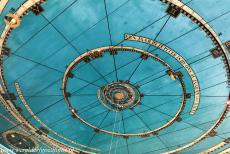
Eise Eisinga Planetarium in Franeker: On the ceiling is painted the speed at which the planets of the planetarium move around the sun, here is painted that Jupiter revolves around the sun once every 11,86 Earth years, and Saturn revolves around the sun in 29,457 Earth years. The Sun is painted at the centre of the ceiling. The Zodiac and phases of the Moon are also depicted on the ceiling. To this very day, the planetarium shows the current positions of the planets.
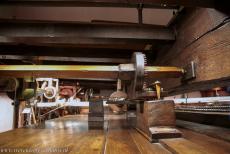
Eise Eisinga Planetarium in Franeker: Eise Eisinga lowered the ceiling of his living room to make more room for the ingenious system of horizontally and vertically rotating wooden cogwheels. The planetarium of Eise Eisinga became much larger than usual, it even allowws for the elliptic orbits of the planets. The work of Eise Eisinga has been included in the national Canon of the Netherlands and also in the Canon of Friesland.
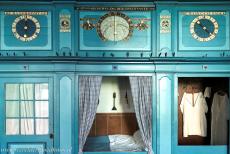
Eise Eisinga Planetarium in Franeker: The living room with a Dutch Bedstee (box-bed or closet-bed) of Eise Eisinga. At the end of the 18th century, Eise Eisinga built the largest planetarium the world had ever seen. The planetarium is painted royal blue and outlined in sparkling golden paint. From the Bedstee in his living room, Eise Eisinga had a good view of the model of his self-build solar system.
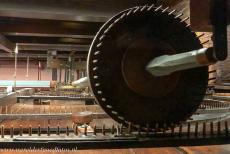
Eise Eisinga Planetarium in Franeker: In the attic, the cogwheels form a mechanism of sixty wooden hoops and discs. Together with his father, Eise Eisinga constructed dozens a cogwheels and axles, but first Eise Eisinga did all the calculations, such as speed at which the Moon and the planets of the planetarium move around the Sun. In June 1818, King William I of the Netherlands visited the planetarium.
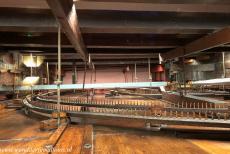
Eise Eisinga Planetarium in Franeker: One of the huge cogwheels of the planetarium to make the planets revolve around the sun. When Eise Eisinga died in 1828 he left his children detailed instructions on how to maintain the planetarium, such as the re-setting every four years to compensate for the February 29th of a leap year, the cogwheel indicating the date has to be turned manually backward one day.
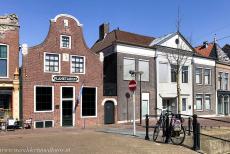
Eise Eisinga Planetarium in Franeker: The planetarium is located in a historic canal house, dating from 1490. The planetarium is situated on a canal in the Dutch town of Franeker. Eise Eisinga bought the house in 1768 to live in with his family. In his living room he built the planetarium. In this house, Eise had also he business, a wool comb establishment. Eise Eisinga was a successful businessman, employing more than forty people.
